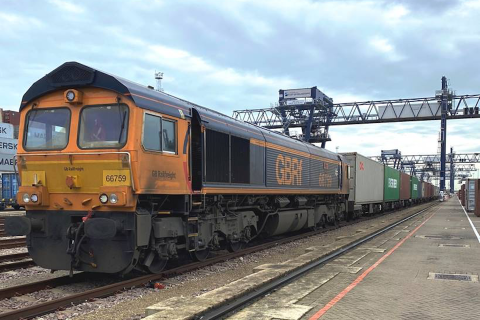“It’s practically impossible to destroy Ukrainian railway network”

The Ukrainian railways sector continues to develop, amidst an ongoing military conflict with Russia, and the associated massive damage to the country’s railways infrastructure. As Yulia Klimenko, Deputy Chairman of the Committee on Transport and Infrastructure in the Ukrainian Parliament recently noted, is “practically impossible” to destroy the railway track of the country.
Compared to energy infrastructure facilities and nuclear power plants, Ukrainian Railways has “greater mobility”, the politician noted. While more than 40 per cent of the railway infrastructure of the country has been damaged, it is constantly being repaired as well. This means that at present, there is no threat of the suspension of rail activity, she explained.
Damage comparable to WO II
Since the war started, the rail infrastructure has been the target of military attacks. Since 24 February 2022, over 6,000 km of railway tracks have been damaged and become non-operational in Ukraine.
According to the Ukranian Ministry of Infrastructure, a preliminary review of the condition of railways in the de-occupied regions shows that, on average, about 10 per cent of the railways in the areas where hostilities took place were damaged, and that is excluding the occupied regions.
Rail more important than ever
At the same time, the importance of rail transportation has significantly increased since the start of the war. Rail allowed for the evacuation of almost 7 million people from eastern and central parts of the country to its western borders (and abroad) and ensured regular supplies of humanitarian and military cargo.
The restoration of the railway network is therefore high on the agenda. As Oleksandr Kamyshin, CEO of Ukrzaliznytsya pointed out: “It is important to restore the railway connections with the de-occupied cities, because this brings life back to them. As soon as we restore passenger traffic, we will look for a way to restore cargo traffic.”
Although the urgency is high, restoration is a timely and costly matter. Kamyshin adds that restoration may take years, and significant funds. According to last year’s estimates provided by State Highway Service of Ukraine (Ukravtodor), the reconstruction of destroyed rail roads costs an average of UAH 29 million per 1 km of road, or about US$26.6 billion in total. Despite ongoing constant restoration of the Ukranian railwas network, experts believe that the current condition of the Ukrainian rail transportation system is comparable to that in the first year of World War II.
Drop of cargo
This also explains how the cargo volumes handled by Ukrainian Railways have dropped. Although there is a clear increase in the demand for the transportation of grain by rail since the limitations of sea shipping, it has not actually led to more cargo on the rails. In 2022, the railway company transported 28.9 million tons of grain, which is 14.2 per cent less than in 2021.
In terms of overall cargo traffic, the volumes handled by Ukrainian Railways fell by half (49.8 per cent) in the first ten months of the year, compared to the same period last year; to 129.8 million tons. The official data for the entire year will be announced later. This may affect the overall image, as the last two months of the year witnessed an uprise in the transportation of grain.
Rolling stock
Another challenge for the development of rail transportation is the availability of rolling stock. Prior to the war, one of the main problems of the Ukrainian railway sector was a high level of depreciation of the rolling stock. Half of the fleet of Ukrainian Railways was produced before 1970. The fleet even includes VL8 electric locomotives, which are 65 years old. In Russia, these were decommissioned 30-35 years ago.
In order to solve this problem, Ukrainian Railways attracted serious investments for its fleet modernisation, both from domestic and foreign businesses (including joint projects with the American General Electric). However, this was before the war. In recent months such contracts have been suspended.
Currently, there is a lack of new locomotives in the country, both electric and diesel ones. One of the few factories producing locomotives in the country was located in the city of Luhansk, which is currently controlled by Russia. There is also a shortage of components and parts for locomotives in Ukraine, as the country generally experiences a lack of production.
Going strong
Despite these challenges, the Ukrainian rail business keeps going strong. What is damaged can be restored, and what was discontinued can be resumed, seems to be the motivation. It is therefore not surprising that Ukrainian Railways has won the Rail Champion Award, organised by UNIFE and CER.
“These efforts demonstrate the enormous resilience and crisis fitness of the railway system and the importance of strong railway companies. The ongoing achievement is highly deserving of our honorary recognition, with which we would also like to underline the EU community’s solidarity and support”, the companies write.
You just read one of our premium articles free of charge
Want full access? Take advantage of our exclusive offer




